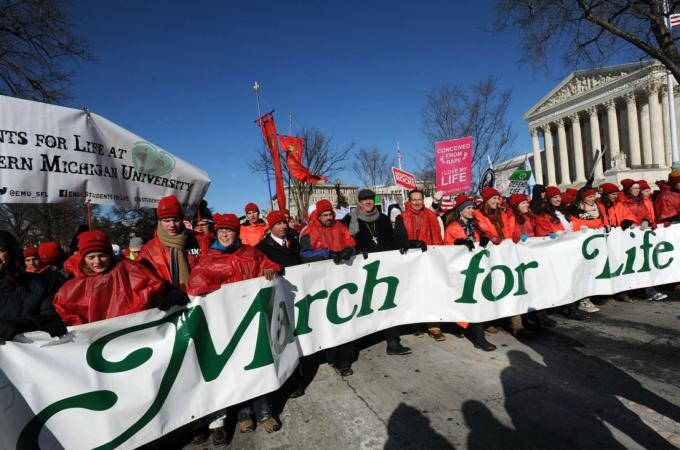The bastion of pro-abortion support
In the dead of winter every year thousands of prolifers throng the streets of downtown Washington making a public statement on behalf of life. Converging on the Mall for speeches in the shadow of the Washington Monument and the White House, they march up one of the capital city's broad avenues to the marble palace that houses the Supreme Court.
It is not recorded that the justices take any notice of their prolife visitors. None of them has ever stood on the steps and addressed the March for Life. On the evidence, the Supreme Court today remains the bastion of pro-abortion support that it's been since the day in January, 1973 when it abruptly and with no visible precedent legalized permissive abortion throughout the United States.
If there was any doubt about where the court stands, it disappeared on June 27, last day of the court's recently concluded term. It voted 5-3 to overturn portions of a Texas law setting standards for abortion clinics, including physical conditions comparable to surgical centers and hospital admitting privileges for doctors who do abortions.
Justice Stephen Breyer, speaking for the majority, said the requirements "place a substantial obstacle in the path" of women seeking abortions. Similar provisions in other states also presumably fail to meet the Supreme Court's "substantial obstacle" test. Prolife Americans might reasonably say the Supreme Court is a substantial obstacle to regulating the performance of abortion.
In one sense, the solution to that problem is obvious: replace two of the prochoice justices with prochoice ones. If elected president, Hillary Clinton certainly won't do that. Donald Trump has said he would, and has issued a list of names from among which he would make his selection. But there are two problems with that: first, Trump needs to get elected, after which he must get two shots at filling Supreme Court vacancies that don't presently exist and have them confirmed by the Senate. There's no certainty any of those things will happen.
This points to an unpleasant but necessary conclusion: it would be self-defeating to go on sending abortion-restricting laws to the Supreme Court as long as it's virtually certain the court will overturn them, reaffirming and strengthening its own prochoice precedents in the process.
Miracles do happen of course, but there's no sign of one happening here, as the outcome in the Texas case has painfully reminded us.
Is this a counsel of despair? Not at all. The prolife movement simply needs a strategy built around things like education, motivation, and services to women at risk, along with an expanded prolife agenda that includes many other issues along with battling abortion. Call it building a Culture of Life.
Getting the Supreme Court to reverse itself on abortion shouldn't be abandoned as the longterm goal, but pushing test cases to bring that about should be put on hold until the time--not too far in the future, let us hope--when there's a realistic chance of that happening. As for the courts, defending the religious liberty right to refuse cooperation with abortion should keep prolife lawyers occupied now and in the foreseeable future.
And when those thousands of prolifers march through the streets of Washington again next January on the anniversary of the infamous Roe v. Wade decision, I hope to see many of them carrying banners, singing, and praying not only in opposition to abortion but in favor of Culture of Life issues from gun control to ending the death penalty. Give it some thought, folks.
- Russell Shaw is the author of more than twenty books. He is a consultor of the Pontifical Council for Social Communications and served as communications director for the U.S. Bishops.



















